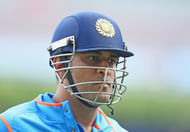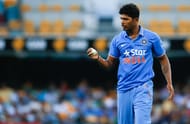Prior to the commencement of the 2011 World Cup, the Indian team looked chiseled. They were stoic against the South Africans in their own backyard and appeared almost impregnable at home. When names of sides were being brandished as favourites a few weeks before the tournament, as is the norm before any major sporting event, India’s entry was unanimous.
Subcontinent conditions notwithstanding, the line-up looked equipped for most situations. Although the bowling was insipid at times, they were capable of holding fort on a familiar turf. It was India’s best chance of winning the World Cup at home, the tabloids and broadsheets stated. They were all vindicated in due course of time.
Has the transition failed?
The next few months after bagging the coveted trophy marked an absurd phase in Indian cricket. While victories dried up in the longer format, matches that should have been drawn were lost and the ones that should have been won were drawn. Very few pundits wondered if the powers that be were missing the obvious in not making strategic and combinational changes, but all such observations were deemed obscure in comparison to the reverberations of the dramatic World Cup triumph by the majority.
Two psychologists, Dan Simons and Chris Chabris, call this phenomenon the ‘Illusion of Attention’, where they prove that “focused attention causes a failure to see something that might otherwise be glaringly obvious”. In the above case, the attention was firmly fixed on the rosy picture depicted by the potential and experience of the team in 2011, so much so that a steady rise in shortcomings went nonchalantly unseen.
While some stalwarts made an exit in the months that followed, some had to be axed. The shuffling and infusion of young blood did result in a few highs, but the many lows were prominent. These results were justified by flashing the word ‘transition’. The youngsters’ naivety certainly needs to be taken into account, more so in the Test arena, but when there is a lack of vivid picture in the One-Day International (ODI) format — the roles of a few players and their position in the squad are yet to be defined, especially with the 2015 World Cup breathing down your neck, it calls into question the methods employed by the head honchos.
Batting order conundrum
Nonetheless, to query the selection and skills of the players picked is futile at this juncture. Mahendra Singh Dhoni could do well to borrow Theodore Roosevelt’s quote: “Do what you can, with what you have, where you are.” But perhaps Dhoni, too, would yearn to have the team combination he did four years ago. Currently, he’s devoid of an opener who can get the side off to a rollicking start like Virender Sehwag characteristically did at the time.
Shikhar Dhawan, no doubt, houses the potential to go berserk, but in his current form, he appears to be a sitting duck. And is Rohit Sharma going to be fully fit and, importantly, stay that way for the rest of the tournament? Would it be a good bet to pick him sans any match practice?
The middle-order remains undecided, with a question mark hovering over Ajinkya Rahane’s spot. Virat Kohli, perhaps the only reliable Indian batsman in overseas conditions at the moment, was tested at No.4 before being reinstated to No.3. Ravindra Jadeja is nowhere perceived close to the threat he posed a year-and-a-half ago. It still remains uncertain if he will be chosen over Axar Patel or if the latter will be picked on the basis of limited outings (although his figures of 10-1-39-1 against England in a low-scoring match at Perth warrants a berth).
A case for Umesh Yadav
This brings us to India’s ever-present conundrum: the bowling attack. Since the conclusion of the 2011 World Cup, only one bowler features in the top ten of bowlers’ list with best averages in away conditions – Mohammed Shami. The rest are far behind, with the second Indian in that list – Ravichandran Ashwin – not even a permanent in the Indian line-up at the moment. Ishant Sharma continues to evade responsibility, having stated multiple times that he is “not the leader of the bowling attack” because most of the other bowlers are around the same age too.
Moreover, injuries continue to punctuate his career. Umesh Yadav is one bowler who’s had a relatively decent average (30.80) in ODIs away from home since 2011, but one wonders how demoralized he must be owing to frequent omissions. Although he proves to be expensive at times, he is a gamble Dhoni must be willing to take, solely because of the pace he generates off the turf. Like Michael Hussey said from the confines of the commentary box during India’s game against England, “I’d pick Yadav in my side because he has the ability to consistently clock over 145kph.”
Bhuvneshwar Kumar has been efficient, but he is miles away from the Zaheer Khan Class. How Dhoni will do without one of India’s finest seamers this time around, and how he manages to conceal the glaring crevices in this Indian bowling unit on pitches that are not spinner-friendly, will be intriguing to see.
Nevertheless, it has to be said that India’s chances appear sombre in comparison to the lead-up to the World Cup during 2011. At the risk of coming across as a doomsday prophet, keeping India’s depleted batting and bowling repertoire in view, it would take a lot for India to reach the final four in the tournament.
Follow IPL Auction 2025 Live Updates, News & Biddings at Sportskeeda. Get the fastest updates on Mega-Auction and cricket news


